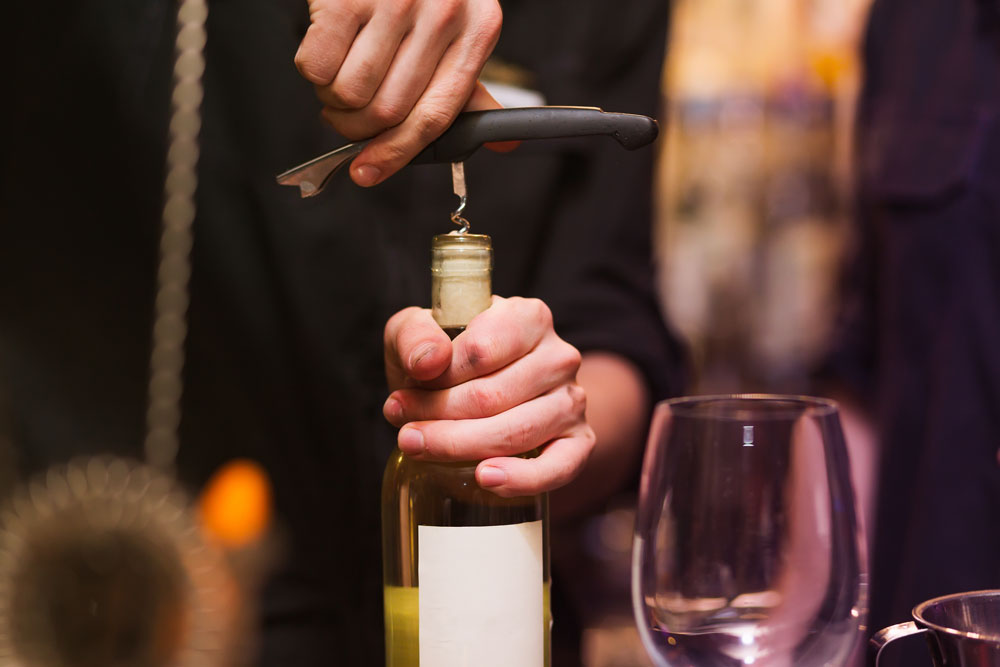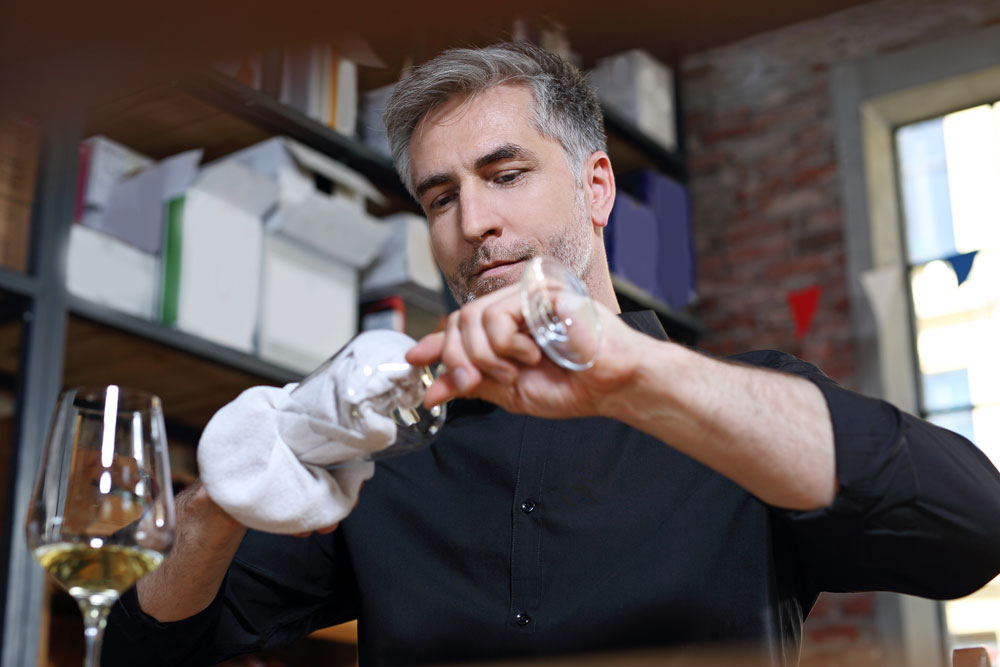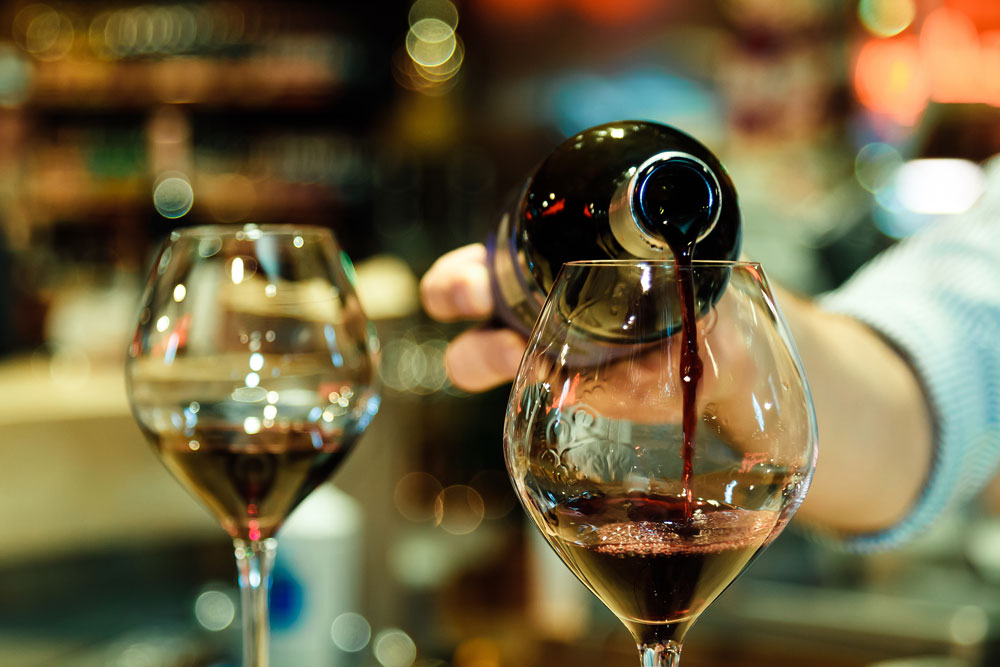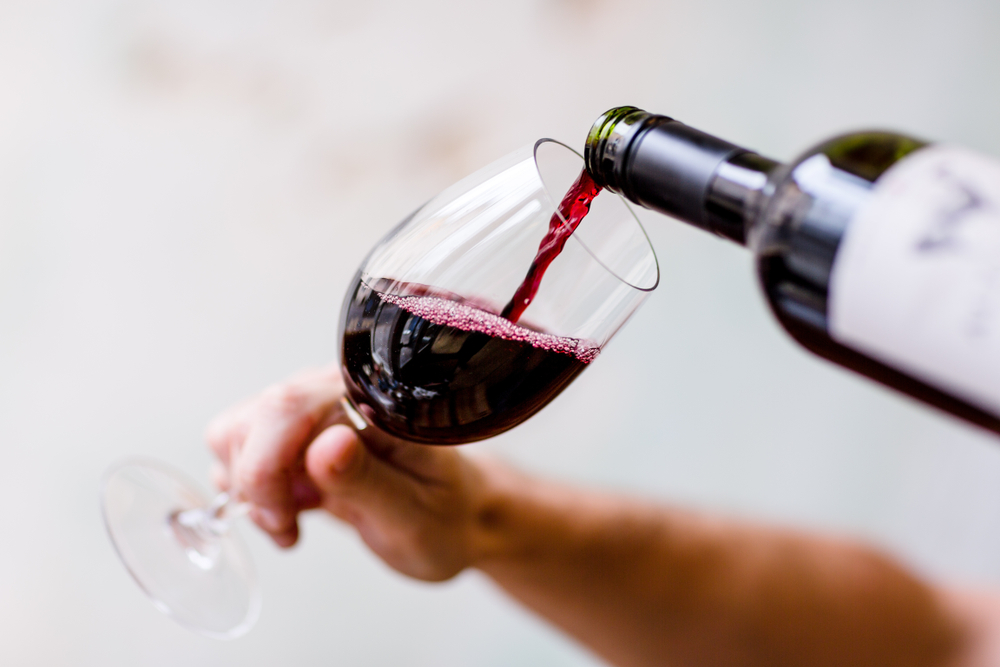After years in the wine industry, I’ve noticed certain habits that most professionals tend to have in common. Here are a few tips that will make you look like a wine pro and hopefully enhance your enjoyment of serving and tasting wine.
1. Store Your Wine Horizontally
Over time, wine bottles stored upright risk damage – as the corks dry out, they tend to shrink, allowing air leaks and spoilage. The easiest way to prevent corks from drying is to store your wines on their sides. That way, the liquid in the bottle keeps the corks damp and helps to maintain their seal. If you’re only keeping a bottle for a few weeks, it isn’t a big deal, but longer term storage benefits from a horizontal orientation.

2. Wipe The Mouth Of Your Bottle After Pouring
It’s really difficult to pour wine without occasionally spilling a drop on the table, or worse, on a guest. In order to prevent spills, keep a cloth or napkin in your off hand. Wipe the mouth of the bottle each time your pour. You’ll notice the sommeliers using the same technique the next time you’re at a restaurant.
3. Turn The Wine Opener, Not The Bottle
When inserting your corkscrew into the cork of an unopened bottle, it’s tempting to hold the corkscrew stationary and rotate the wine bottle with your other hand. While this technique is perfectly effective, professionals are taught to hold the bottle still and rotate the wine opener instead – leaving the label stationary for easier viewing.

4. Polish Your Wine Glasses
This step is simple and easy to overlook, but it makes a big difference in the enjoyment of a wine when you can see it easily through a clean glass. Polishing also gives you a chance to check your glasses for leftover detergent smells from the dishwasher or dust from the cabinet.

5. Learn A Few Details About The Bottles You Serve
When purchasing a new wine to serve guests, try to learn and remember a few details about it. Use the “what, where, when” approach. Where is the wine from? What grapes were used to make it? Does the winery have an interesting story associated with it? Does the wine have special significance to you? Having a few things in the back of your mind that you can say about each bottle will give you possible conversation topics and allow you to educate your curious friends and loved ones.
6. Don’t Pour Too Much At A Time
When pouring wine from the bottle into an empty glass, be careful not to overfill. The wine glass should never be more than two thirds full – I personally fill glasses only about a third of the way. That way, your guests will have the option of choosing to drink less while still having the option to refill. Also, wine glasses are carefully shaped to focus the aroma of wines. Overfilling a glass prevents it from enhancing your tasting experience.

7. Keep An Eye On Other People’s Glasses And Offer Refills
As an evening of wine drinking progresses, keep an eye on the wine glasses of your guests. Offer wine to anyone with an empty glass and if they decline, let them know that you take their empty glass and ask if you can get them anything else. A wine gentleman once advised me that it’s better to offer wine each time, rather than offering more wine. The distinction is small, but the effect is nicer with the former. For example, “would you care for some Chardonnay?” is preferable to “do you want more Chardonnay?” – no matter how many tastes of Chardonnay that person has already had.
8. Smell Your Wine Before Drinking It
When tasting a wine, be sure to smell it first. The human nose can detect far more subtlety than our taste buds can. Even when the wine is entirely in our mouths, much of the flavor we think we’re tasting is actually aroma that we’re smelling through the inside of our nasal cavity. Get in the habit of sniffing before every sip and the wine will taste more intense and complex.

9. Sip And Savor Your Wine
If you drink your wine the way you drink water, it will run across only a portion of your tongue, preventing you from tasting the full range of flavors. Instead of swallowing right away, try taking medium to large sips and holding them in your mouth for at least ten seconds. Sometimes, I’ll hold a sip in my mouth for thirty seconds or more. This way the wine’s aromas and flavors will saturate your mouth, giving you the maximum wine tasting pleasure.
10. Don’t Pop Your Champagne Corks
When opening a bottle of Champagne, resist the urge to allow the cork to pop out loudly. While it’s fun to let the cork shoot out, it can be dangerous. Champagne is under surprising pressure in the bottle, and flying corks can cause serious injury. Also, it reduces the carbonation of the wine, making it go flat faster.
Hopefully, these suggestions will help you feel more comfortable serving wine at home and make you look professional and confident even in the most casual of gatherings. Be sure to visit Wines ’til Sold Out to discover more about the world of wine!



